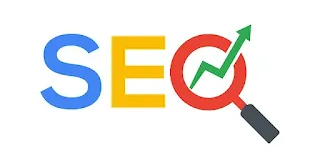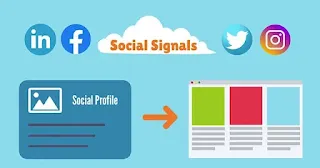History and Evolution of SEO
SEO
Before discussing the history behind SEO, let’s begin with the term search engine. All of us are aware of the term search engine. Search engine is a software that helps us find a piece of information in the internet using keywords. It will access all the information according to our web search. Google is one of the most commonly used search engine. Other popular search engines are Yahoo, Bing, Baidu etc.
Search Engine Optimization (SEO) is a process by which the websites are ranked to the top or higher position in search engines. In short, an act of optimizing or improving the search results and increasing organic traffic in search engines.
History of SEO
When it comes to the history of the search engine named Google, it takes us to a university project done by two students. The idea of Google was a part of that project with an aim to provide relevant information and google.com came into existence from 1998. At that time, the search results were sent to the email id provided by the user within a time period of 24 hours. In 2000, search engines were getting more popular among the public. But on September 11, 2001, the World Trade Centre in US was attacked by terrorists. Unfortunately, Google was not able to provide proper information to those people who searched the news. Google took it as a matter of consideration. After analysing the situation, they reached at a conclusion that all web pages were not crawlable to them. In order to fix it, they then started working on it to make changes to work better.
Let’s discuss it in detail. Search engines consists of mainly 3 process. The first one is crawling, a process of scanning information or pages using a bot (robot or web crawler or spider). Then it collects all the information needed and save it in a database. This process of taking snapshots of the details is called caching. Indexing means displaying the most relevant search results to the user.
The issue occurred in the case of terrorist attack made the officials think about the question of making webpages crawlable. But it can only be done by webmasters, the custodian of websites. Google had to provide proper awareness about SEO to these webmasters. But they thought it as a threat to themselves as it was very confidential. At last, Google published a starter guide for optimization practice awareness named ‘SEO Starter Guide’.
Evolution of SEO
At first, Google was Niche specific or content specific, which means occurrence of keywords helps in ranking websites. The more the occurrence of keywords, the more the rank will be. Using this technique, webmasters started becoming unethical. They started using a Black Hat SEO technique to rank websites on top called Keyword Stuffing. Such an overuse of keywords was against their guidelines. On the other hand, White Hat SEO technique is an ethical practice following all the guidelines. When all those problems started to arise, Google changed its algorithm to link specific. In this the ranking was done based on the number of links including hyperlinks from other websites to our website. Google considered those links as recommendation vote. Unfortunately, started selling links to those who were in need to make their webpages to higher rank which in turn lead to loss quality contents in Google.
Page Rank System
Google introduced a Page Rank System based on the trust value and genuine content of webpages, in which pages were ranked from 0 to 10. It was introduced in 1998 but made available to public from March 15, 2000. Based on this, the number of links from websites with top page rank were considered as Quality link specific. 200 other factors were also considered along with the links. But here also, webmasters started misusing it. Those webpages with high page rank started to sell links to other webmasters. While doing so, their equity passes from one site to another and page rank goes down, which is known as passing the juice. In order to keep the page rank high in the case of genuine webpages, Google introduced a ‘no follow’ tag for hyperlinks, in which equity will not be shared.
<a href=”https://www.name.com” rel=”nofollow”>anchortext</a>
Google Ads and Google AdSense
Why Google feared to change its algorithm? Google became very popular during the period of 2000 to 2008. On October 23, 2000, Google started an advertisement program named Google Adwords, now known as Google Ads or Pay Per Click (PPC). It allows businesses to advertise their ads on Google’s search results page. Businesses will pay Google to display their ad at the top position based on keywords. On June 18, 2003, an affiliated program called Google AdSense was introduced. A person with a website or blog can apply and get approval from Google. Then those website owners can display ads in their website and earn according to the number of clicks for that particular ad. If Google changes its algorithm, it will affect their income because algorithm change leads to changes in keyword which in turn decreases the viewers visibility to websites, thereby decreases the revenue generated from ads.
Some of the major updates in 2008 include Personalized search results and Auto suggestion. Google started appearing as a personal assistant during this time. In 2009, rankings were based on interaction and time people spend on a website. Less interaction and less time spend on a website leads to increased bounce rate. When bounce rate decreases trust value increases. Revisiting and regular visiting will increase trust value. Pogo sticking is a situation when a user goes back and forth from search results in an attempt to find better results. It will be considered as a sign that the search results were not relevant or useful to the user. This can lead to a lower CTR (Click Through Rate) and a lower ranking in search results.
Importance of Social Signals
During 2010, Social media platforms gained popularity and contents appeared there reflected quality and value to some extent. The highest ranking pages in Google search results have a lot of shares which in turn lead to more traffic and also make your content more likely to build backlinks. Social media signals means the activities such as likes, shares, comments, etc., can improve website ranking. Influential power also plays a role in ranking.









Comments
Post a Comment